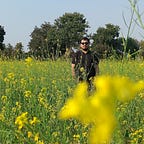INDIA AFTER GANDHI By Ramchandra Guha
If there is one book which I think every indian should read, especially those born after 1990s, they should consider “India After Gandhi”. The book concisely comprises 70 years of independent india in less than 700 pages. Nevertheless, it is voluminous, and you will need time to complete it. But believe me, not a single moment you will find it long, boring or uninteresting to read.
The book begins with 15 August 1947, right at the start of Independent India. It explicitly captures behind the scenes of glorifying days after Independence. The Independence of India came at a cost of two nations. How the world was making jokes of India, how there were predictions of India getting divided into fragments of small independent nations, like Europe, how extreme poverty and illiteracy will cause the complete breakdown of the economy. No economic policy, no political philosophy will save India from this, and yet how the first rulers of our country especially, Nehru, Patel and Ambedkar, saw this coming and successfully managed to save India from all these.
If you look at the situation of India just after Independence, you would never believe the India you are seeing today. The problems which our country was facing were almost too insolvable.
The influx of one of the largest immigrants in human history, giving shelter and food to all of them. Creating a democaratic nation having 70% population in poverty. Giving universal adult franchise to its almost 90% illiterate population. Building on the ideas of pluralism in the land where the very cause of partition was tensions between Hindus and Muslims.
At the same time, the world was just indulging in the Cold War. The world was ideally divided into two parts and every other country was falling either into Capitalism or Communism. Avoiding that trap, and taking a policy of “Non Alignment” allowed India to stand as the third corner. Yet how India decided on its economic policy, its educational policy, its agricultural policy, its industrial policy, its foreign policy, its military policy, its nuclear policy, and the list just goes on and on.
The country was left with more than 500 princely states. To forge a nation, and then yet to divide further on the basis of linguistic states, was the biggest challenge for our rulers. To formulate a constitution, based on the most radical ideas and giving equal status to all in front of law, was the bolden step taken by this country.
The book continues, taking us through the journey of India, facing the challenge of Kashmir witnessing wars with Pakistan, China, seeing the agricultural revolution, the coming of Indira Gandhi as prime minister and a complete change of administration under her. The division of Pakistan into Bangladesh, and the dark period of emergency. The demand for Khalistan, Operation Bluestar, and the assasination of Indira Gandhi. The accord with Assam, the settling of issues with Nagaland, Manipur, and yes Punjab. The Indian Army’s unit going to Srilanka, and the assasination of Rajiv gandhi. The period of unstable governments at centre and the emergence of new parties at state level. The Indian State on the verge of Bankrupty, and opening of the doors of liberalisation and the economy of India for the world. The era of 90s and entering of India into next century with accelerated growth in IT sector, pharmaceutical sector. The witnessing of Sikh riots and Godhra riots,and the issue of Ram janma Bhoomi Bhivad. The rise of BJP systems and finally the era of Narendra Modi.
But, don’t be startled by these stories. The book along with all these also includes the societal and cultural transformation of India, The economic transformation of India., the transformation of foreign stand of India. The book brilliantly blends the political history, social history, cultural history, through its 70 years of India.
Now I can write infinitely about this book, but I need to control my emotions, and allow you to explore this masterpiece and share your thoughts. I firmly believe that after reading this, you will have a bird’s eye view of independent India, and also the nitty gritties of this marvellous state.
